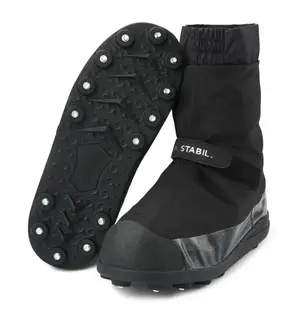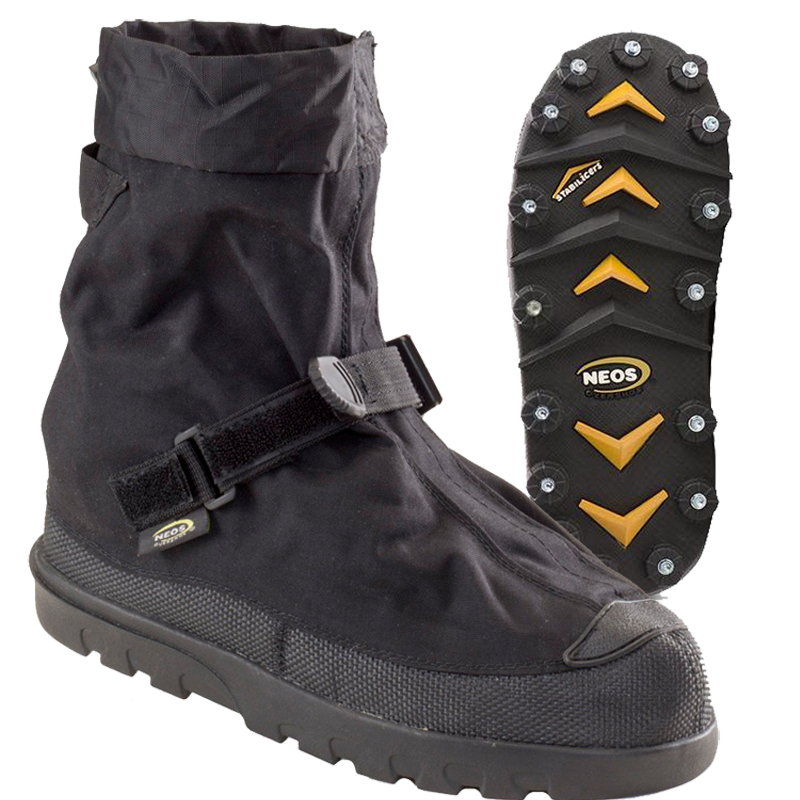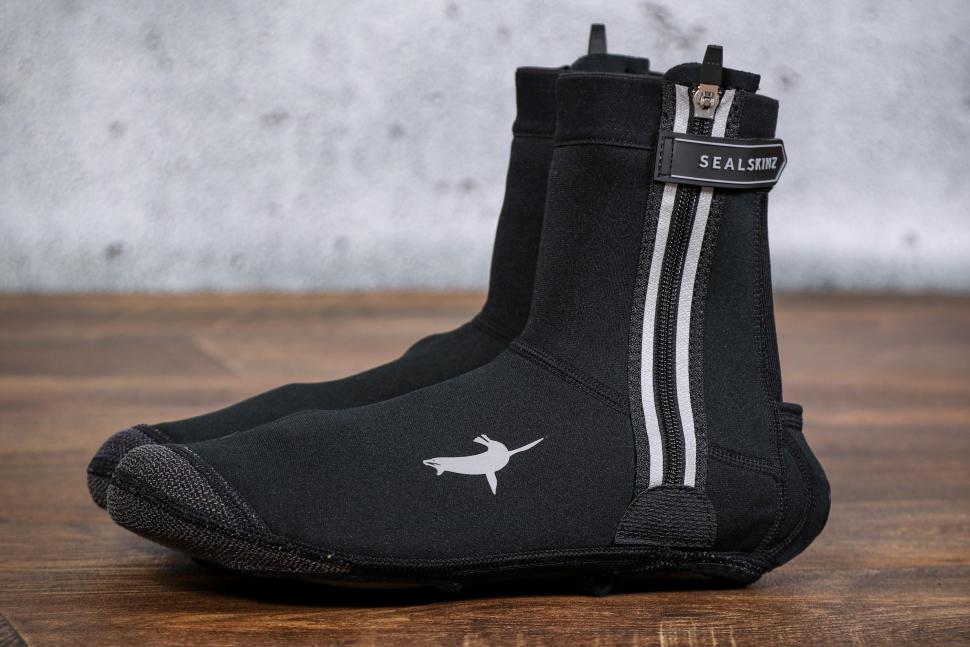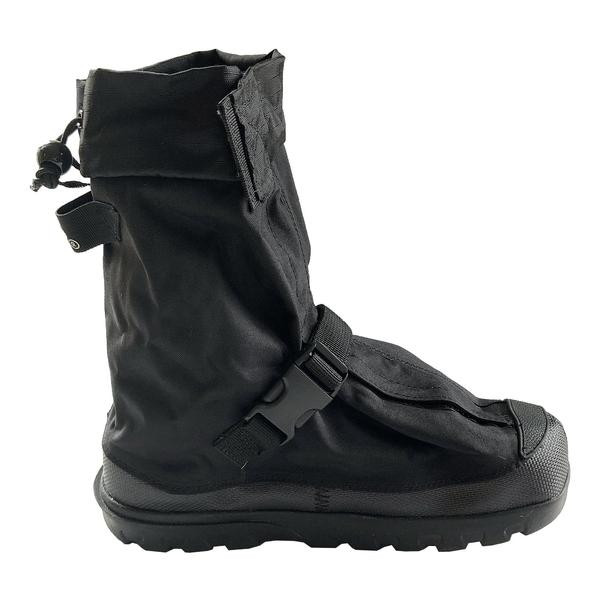Unveiling the Evolution and Practicality of Overshoes: A Comprehensive Guide
Overshoes, commonly known as galoshes, are protective shoe coverings designed to shield footwear from adverse weather conditions such as rain, snow, and mud. Initially emerging as simple coverings made from materials like leather or fabric, overshoes evolved significantly during the Industrial Revolution with the advent of Charles Goodyear's vulcanization process, leading to the mass production of durable rubber galoshes. Today, overshoes come in various styles and designs, serving a dual purpose of preserving the wearer's shoes and making a fashion statement. These versatile accessories are not only used for weather protection but also find practical applications in various industries, ensuring safety, hygiene, and convenience in different professional settings.
Contemporary Innovations in Overshoes.

In the realm of footwear, overshoes stand as a testament to innovation and functionality. Often regarded as a protective layer for shoes, overshoes have traversed through time, adapting to various needs and environments. From their inception as simple rubber galoshes to the contemporary, multifaceted designs catering to diverse purposes, overshoes have emerged as a significant accessory in both fashion and practicality. This article aims to delve deep into the history, evolution, utility, and contemporary relevance of overshoes.
Origins and Historical Evolution
The concept of overshoes dates back centuries, initially manifesting as simple coverings made from materials like leather or fabric to protect shoes from mud, water, or harsh weather conditions. However, the evolution of overshoes gained traction during the Industrial Revolution, when the necessity for more durable and practical footwear arose. This era saw the birth of rubber galoshes – a revolutionary invention. Charles Goodyear's vulcanization process in the 19th century transformed rubber into a resilient material, paving the way for the mass production of waterproof and durable overshoes.
Versatility and Utility
Overshoes, often synonymous with galoshes, are multifunctional. They offer protection against rain, snow, and mud, ensuring the preservation of one's primary footwear. Traditionally, they were primarily utilitarian, serving to shield expensive or formal shoes from inclement weather. Nevertheless, the functionality of overshoes has expanded significantly. Today, overshoes come in various styles and designs, catering to different purposes – from sleek, transparent overshoes for preserving the elegance of dress shoes to heavy-duty, insulated overshoes for outdoor work in extreme conditions. Their versatility extends beyond weather protection; some models are engineered for safety, offering slip-resistant soles, steel toe protection, and even chemical resistance, making them indispensable in industrial and construction settings.
Fashion and Style
In recent years, overshoes have transcended their utilitarian origins to become a fashion statement. Designers have incorporated overshoes into their collections, offering a blend of functionality and style. Transparent, PVC overshoes, for instance, have gained popularity as a trendy accessory, allowing individuals to flaunt their footwear while protecting it. Additionally, overshoes have become a part of street style, with fashion enthusiasts pairing them with various outfits to add a distinct edge or a playful twist to their look.

Contemporary Innovations
Advancements in materials and design have transformed overshoes into more than just protective gear. Modern iterations feature eco-friendly materials, innovative closure systems, and ergonomic designs. Some are foldable or easily packable, ensuring convenience for travelers or urban commuters. Moreover, technology has seeped into overshoes, with features like self-cleaning surfaces, anti-odor properties, and enhanced breathability becoming common in some high-end models.
Practical Uses in Different Sectors
Overshoes are not confined to personal use. They have found their application in various professional domains. In healthcare settings, medical professionals often use disposable overshoes to maintain hygiene standards and prevent cross-contamination. Industries such as food processing, laboratories, and cleanroom facilities also implement overshoes to maintain sterile environments. Moreover, in construction and industrial sectors, overshoes play a crucial role in ensuring safety by offering protection against hazardous substances and enhancing traction on slippery surfaces.
Types of Overshoe
Overshoes, or galoshes, come in various types, each designed for specific purposes, conditions, or preferences. Here are some common types of overshoes:
- Rubber Overshoes/Galoshes: Traditional rubber overshoes, typically made of vulcanized rubber, are waterproof and ideal for protecting shoes from rain, snow, and mud. They often have a simple slip-on design with elastic closures.
- Disposable Overshoes: These overshoes are often made from lightweight materials such as plastic or non-woven fabrics. They are intended for single-use purposes, commonly used in healthcare settings or places requiring cleanliness to prevent cross-contamination.
- Winter or Insulated Overshoes: Designed for colder climates, these overshoes have insulation to keep feet warm and protect shoes from snow and slush. They may have a thicker sole for better traction on icy surfaces.
- Fashionable or Transparent Overshoes: These overshoes serve the dual purpose of protecting shoes from the elements while showcasing the footwear. They're often transparent or come in various stylish designs, allowing the underlying shoes to be visible.
- Steel Toe Overshoes: These overshoes are designed for industrial or construction purposes, providing an additional layer of protection with steel toe caps. They're meant to be worn over regular work boots for added safety.
- Traction Overshoes: Often used in professions where slip resistance is crucial, these overshoes have special treads on the soles to provide better traction, reducing the risk of slips and falls in wet or oily conditions.
- High-Top Overshoes: These overshoes have extended coverage, reaching higher up the leg, providing more protection against rain or deeper water. They're suitable for more extreme weather conditions.
- Compact or Foldable Overshoes: These overshoes are designed to be easily folded or stored compactly, making them convenient for travelers or commuters who might need to stow them away when not in use.
- Chemical-Resistant Overshoes: Specifically crafted for industrial or laboratory use, these overshoes are made from materials that provide protection against chemicals, acids, or other hazardous substances.
Functions of Overshoe
Overshoes, or galoshes, serve several functions that make them a practical accessory in various situations. Here are some of the primary functions of overshoes:
- Weather Protection: The fundamental purpose of overshoes is to shield regular shoes from inclement weather conditions such as rain, snow, and mud. They act as a protective layer, preventing the underlying shoes from getting wet, dirty, or damaged due to exposure to moisture or mud.
- Preservation of Footwear: By providing a barrier between the shoes and external elements, overshoes help maintain the cleanliness, integrity, and condition of the footwear. This is particularly useful for expensive, delicate, or formal shoes that one wishes to preserve.
- Safety and Traction: Some overshoes are designed with features to enhance safety. They may have slip-resistant soles, providing better traction on slippery surfaces, thus reducing the risk of falls or accidents, especially in wet or icy conditions.
- Hygiene and Contamination Control: In professional settings like healthcare, food industry, laboratories, or cleanrooms, overshoes play a vital role in maintaining hygiene and preventing cross-contamination. Disposable overshoes are often used to keep environments sterile by preventing the transfer of dirt, germs, or contaminants from shoes.
- Fashion and Style: Contemporary overshoes have evolved beyond their utilitarian role, becoming a fashion accessory. Transparent or stylishly designed overshoes enable individuals to showcase their footwear while protecting it, thus combining functionality with fashion.
- Specialized Uses: In certain industries like construction, industrial work, or hazardous environments, overshoes are designed with specific features such as steel toe protection, chemical resistance, or insulation. These specialized overshoes provide additional safety and protection for workers in demanding conditions.
Advantages of Overshoes
- Protection from Weather Elements: One of the primary benefits of overshoes is their ability to protect regular footwear from adverse weather conditions such as rain, snow, and mud, keeping shoes clean and dry.
- Preservation of Shoes: Overshoes help extend the lifespan of shoes by shielding them from damage due to exposure to moisture, dirt, or debris, particularly in inclement weather or rugged terrain.
- Hygiene and Cleanliness: In professional environments, overshoes maintain hygiene standards by preventing the spread of contaminants and dirt from shoes, helping to keep work areas clean.
- Versatility: Overshoes come in various styles, materials, and designs, offering versatility for different purposes, from casual wear to professional or specialized uses in industries like healthcare and construction.
- Safety Features: Some overshoes are equipped with safety features such as slip-resistant soles, steel toe protection, and insulation, offering additional safety for workers in hazardous conditions.
- Fashion Accessory: Modern overshoes have evolved to become a fashionable accessory, allowing individuals to protect their footwear while showcasing their style.

Disadvantages of Overshoes
- Potential Bulk and Inconvenience: Overshoes can add extra bulk to footwear, making them slightly less convenient for regular use. Their size and design may not fit all types of shoes, limiting their practicality.
- Potential Slippage: If not properly fitted or secured, overshoes can slide or slip, potentially causing discomfort and compromising safety, especially on smooth or wet surfaces.
- Limited Aesthetics: While overshoes have become more fashionable, some designs may not appeal to everyone's style preferences. Certain overshoes might not complement particular outfits or formal wear.
- Quality and Durability: The durability and quality of overshoes can vary significantly based on materials and construction. Some low-quality overshoes may wear out quickly or not provide adequate protection.
- Additional Cost: Investing in overshoes represents an additional expense for consumers, especially if they opt for higher-quality or specialized overshoes designed for specific uses.
Environmental Impact on Overshoe
The environmental impact of overshoes, like many products, is multifaceted, influenced by various factors, including their manufacturing process, materials used, durability, and end-of-life disposal. Here are some key points regarding their environmental impact:
1. Manufacturing Process: The environmental impact of overshoes begins with their manufacturing process. The use of materials, energy, and resources in production can have a significant impact. Companies that employ eco-friendly manufacturing processes, such as using recycled materials or reducing water and energy consumption, can minimize their environmental footprint.
2. Material Choice: The materials used in overshoes play a crucial role in their environmental impact. Some modern overshoes are made from synthetic materials like PVC or other plastics. These materials are durable and provide waterproofing, but they are derived from petrochemicals and may not be biodegradable. Environmentally friendly alternatives include natural rubber or recycled materials, which have a lower impact but might affect the functionality and cost of the product.
3. Durability and Longevity: The lifespan of overshoes influences their environmental impact. Durable overshoes that last longer reduce the need for frequent replacements, decreasing waste and resource consumption. Additionally, long-lasting overshoes that maintain their functionality over time can result in a lower overall environmental impact.
4. Disposal and End-of-Life Management: When overshoes reach the end of their usable life, the method of disposal is crucial. Many overshoes, especially those made from non-biodegradable materials, end up in landfills, contributing to environmental pollution. Recycling programs or facilities that enable the repurposing of materials from used overshoes can mitigate this impact.
5. Consumer Behavior: How consumers use, maintain, and dispose of overshoes also plays a role. Proper care, such as cleaning and storage, can extend the lifespan of overshoes. Additionally, supporting brands that prioritize eco-friendly practices can encourage more sustainable manufacturing and reduce the overall environmental impact.

How to Care and Maintain an Overshoe
Caring for and maintaining overshoes is essential to ensure their longevity, functionality, and to minimize wear and tear. Here are some tips on how to care for and maintain overshoes:
1. Regular Cleaning: Regularly clean overshoes after use, particularly if they're exposed to mud, dirt, or other contaminants. Use a soft brush or cloth to remove debris. For stubborn stains, follow the manufacturer's cleaning instructions, which might involve mild soap and water.
2. Drying Properly: After cleaning, allow overshoes to dry thoroughly. Avoid placing them near direct heat sources, which could damage the material. Instead, air dry at room temperature or use a gentle heat setting if necessary.
3. Storage: Store overshoes in a dry, well-ventilated area away from direct sunlight and heat. Hanging them or keeping them in a designated area helps maintain their shape and prevents damage from being squashed or folded.
4. Avoid Harsh Chemicals: Avoid using harsh chemicals or solvents for cleaning as they may damage the material of the overshoes. Stick to mild soaps and cleaning solutions recommended by the manufacturer.
5. Inspect for Damage: Regularly inspect overshoes for any signs of wear, tear, or damage. Look for cracks, tears, or weakened areas that might compromise their effectiveness. Address any issues promptly to prevent further damage.
6. Follow Manufacturer's Instructions: Always follow the care instructions provided by the manufacturer. These instructions are tailored to the specific material and design of the overshoes, ensuring that you're cleaning and maintaining them appropriately.
7. Proper Use: Use overshoes as intended, ensuring they fit properly over your shoes. Avoid overstretching or forcing them onto shoes that don't fit, as this might damage the overshoes or compromise their effectiveness.

Frequently Asked Questions (FAQ)
What is the word for overshoes?
Overshoes are also commonly referred to as "galoshes."
What is an Overshoe used for?
Overshoes or galoshes are used to protect footwear from adverse weather conditions such as rain, snow, or mud. They act as a layer of protection, preserving shoes from getting wet or soiled.
What is the meaning of Overshoe?
The term "overshoe" typically refers to a protective covering worn over regular shoes, primarily to shield them from the elements, maintaining the shoes' cleanliness and condition.
How do you use Overshoes?
Overshoes are worn by slipping them over existing footwear. They are designed to fit over shoes snugly, ensuring that the footwear beneath remains protected from external elements. Depending on the design, they might have closures or elastic to secure them in place. They are put on before going outside, especially in inclement weather, and can be removed upon returning indoors, keeping the underlying shoes clean and dry.
The evolution of overshoes from rudimentary coverings to versatile, multifunctional accessories epitomizes their enduring relevance in diverse spheres. They have transcended their primary role as mere protective gear to become a fashion statement and a vital component in ensuring safety and hygiene across various industries. As materials and design continue to advance, overshoes persist as a practical solution for safeguarding footwear and enhancing comfort and style in everyday life. Their rich history and adaptability make overshoes an indispensable part of the footwear landscape, proving that their significance will endure for years to come. Whether for fashion-forward individuals or professionals seeking functional footwear solutions, overshoes stand as a testament to human ingenuity and adaptability.



